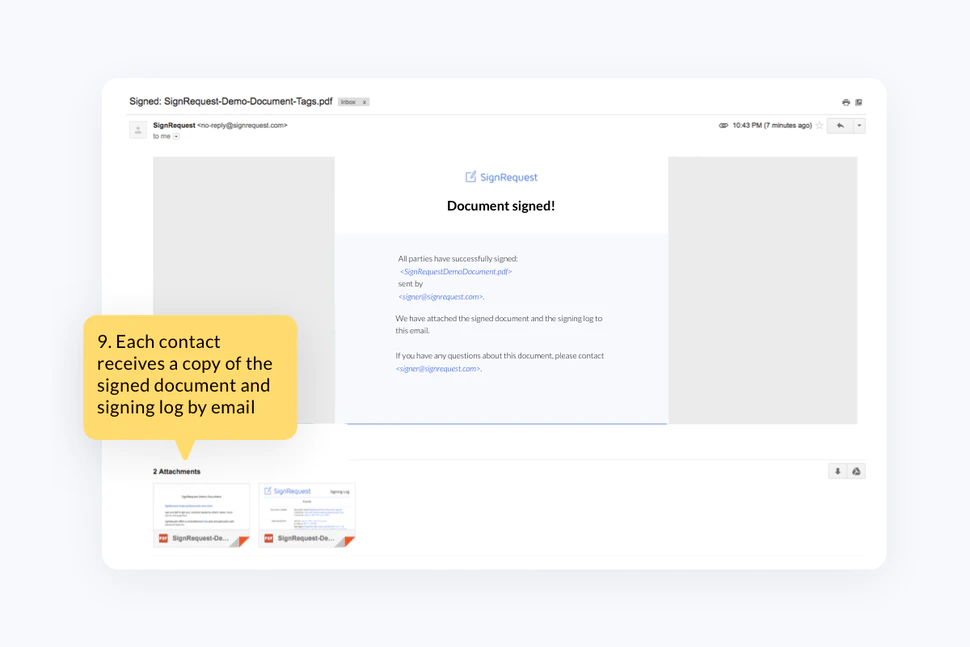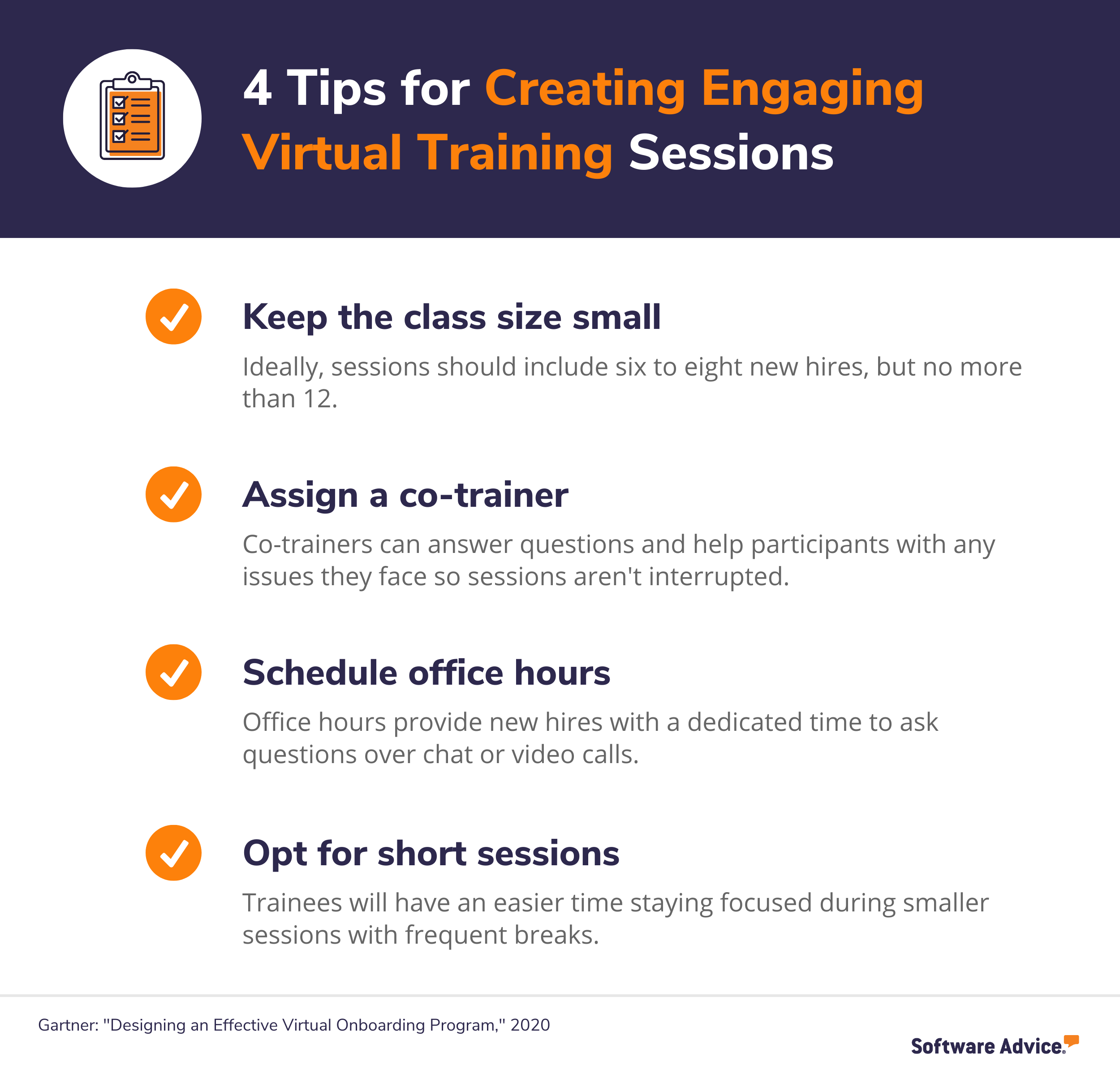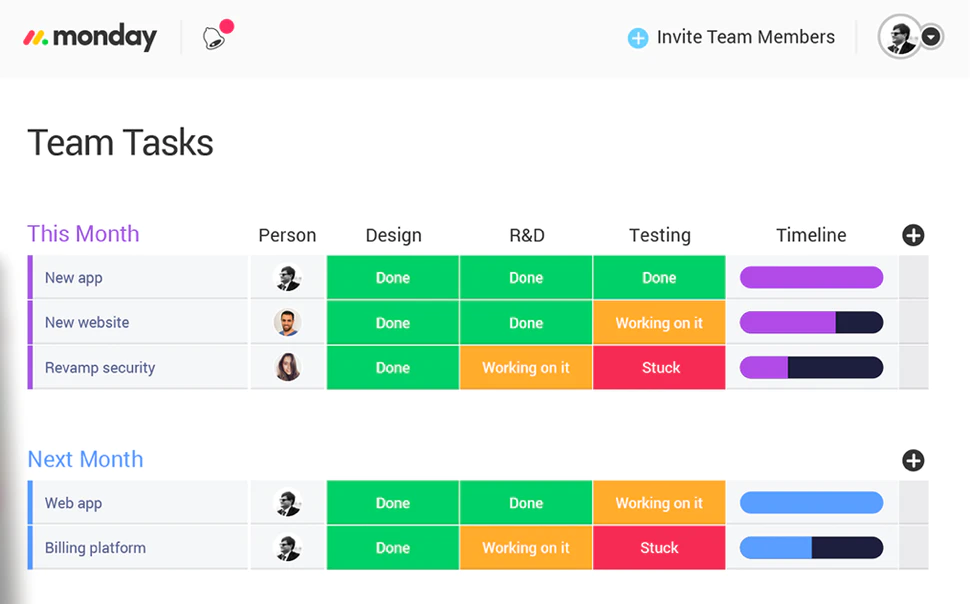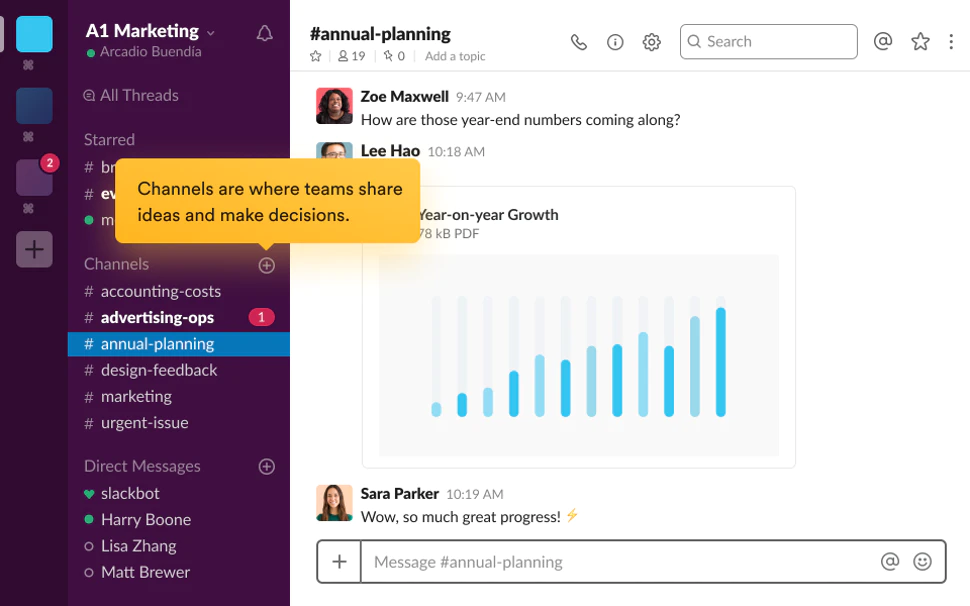A Step-by-Step Guide to Onboarding Remote Employees
In a Software Advice survey conducted last August, 49% of HR leaders told Software Advice they plan to hire more fully remote workers when the pandemic is over.
This means that almost every other business will need to onboard a new employee remotely.
If it seems like an overwhelming task to adapt your onboarding process to a remote setting, know you’re not alone. Many hiring managers have had to make the same transition over the past year. In fact, we talked to a few of them while putting together this guide.
Keep reading for expert tips and software suggestions, as well as insights from business leaders who have successfully transitioned to remote onboarding.
First, how is remote onboarding different from in-person onboarding?
While the steps in the onboarding process remain the same whether you’re in the office or remote, the execution looks different. From signing paperwork to shadowing employees, every step of the remote onboarding process relies on software for completion.
That’s where this guide comes in handy. Below, we’ll walk you through 12 steps of the onboarding process, broken down into four stages. These steps will likely be familiar to you, but in each section we’ll talk about the tools and tips you need to successfully take your onboarding process remote.
4 stages to successfully remote onboard
1. Pre-onboarding (before day 1)
Some may assume that the onboarding process begins on their new hire’s first day, but in actuality it starts when you and your team decide to formally offer a candidate a position. In this section, we’ll cover four steps you should take before your new employee’s first day.
Email them an offer letter to sign electronically
The first step in any onboarding process is to present your hire with their offer letter. Whether your business is well established or in its early stages, there’s no time like the present to assess what’s included in offer letters—especially if you’ve recently transitioned from the office to a remote environment.
Here are some questions you should aim to answer in the offer letter:
Is their schedule fixed or flexible?
What is your company’s PTO/sick day policy?
What equipment is provided?
Are there any onsite requirements, such as conferences or meetings?
If you haven’t already, now is the time to select an online documentation tool for delivering and collecting paperwork from your new remote hire. You can browse options and read about different tools’ functionality in our electronic signature software directory.

Signing documents electronically with SignRequest (Source)
Have your new employee fill out essential paperwork
It’s a given that your new hire will need to sign their offer letter and job contract before their first day, but it’s a good idea to ask them to fill out any other essential paperwork while they’re at it. This will give them a head start so they’re free to focus on training and acclimating during their first week.
In the week leading up to their first day, forward any required tax or legal forms, set up their payroll or direct deposit, and provide them with resources that will help them enroll in benefits (like health insurance or retirement).
Onboarding software can help you automate and keep track of initial steps such as filing work eligibility and tax documents for new hires, setting up their payroll accounts, and storing digital copies of signed forms.
Provide instructions for accessing essential tools and resources
There is a lot of information your new employee needs before they clock in on their first day. For starters, you’ll want to make sure they have their email address and instructions for accessing their inbox. You should also create a schedule or itinerary that outlines their first week so they’re aware of any training, orientation, or introductory meetings they’ll need to attend in advance.
Next, what tools or applications will your new hire need to access on a weekly basis? Create a list with a brief description of each tool, what it’s used for, and how they can access it.
Pro tip: An onboarding checklist can help your new hire stay on top of the actions they need to take within their first week, such as setting up accounts and ensuring access to company resources.
Deliver hardware
The last thing to do before your new hire’s first day is make sure they have the equipment they need to work. Keep in mind that your remote employee should have the same tools that your on-premise employees would have (within reason).
We recommend creating a remote inventory checklist and thoroughly documenting each step taken, such as when equipment was shipped and delivered. Once the equipment is in your employee’s hands, have them give everything a test run so you know they’re ready to go.
2. Orientation and introductions (day 1 – 5)
First days at a new gig are often filled with a mix of excitement, nervousness, and confusion. In an office setting, it’s easy to turn to your neighbor for guidance or reassurance, but it’s not that straightforward in a remote environment. Below we outline four steps you should take to alleviate first-day jitters.
Discuss first week schedule
Give them a warm welcome. Now for the fun part of the onboarding process: Making your new employee feel like part of the team! One popular gesture is gifting new employees company-branded swag. If custom hoodies or office supplies aren’t available, you can achieve the same effect by sending them a treat (like a work-from-home snack box).
Another common first-day tradition is taking your new hire out for lunch. While remote work puts a damper on that idea, you can (and should) plan a virtual happy hour or coffee break so your new hire can get to know your team in a casual setting. We recommend asking each member of your team to introduce themselves, explain their role, and answer some get-to-know-you questions.
Assign a peer mentor
In “Designing an Effective Virtual Onboarding Program,” Gartner recommends establishing a mentorship program where each new hire is assigned a peer mentor to help them acclimate to their role and organization (full content available to clients).
Ideally, the mentor should be a peer in a similar role or at least on the same team. We recommend introducing your new hire to their mentor on their first day. Mentors can provide one-on-one support through shadowing, answering questions, and simply making themselves available to their new hire.
Alastair Kennett, founder and managing director of OptiMale, finds that a mentorship program benefits leadership as well:
“It helps us in higher management stay up to date because we can consult the mentors and get feedback about how the new hire is adjusting.”
Alastair Kennett
Host engaging virtual training sessions
Most roles have training of some sort during the first week, be it formal or informal. With face-to-face training, new hires are typically engaged because they’re supervised and part of an active discussion. On the other hand, virtual training is often self-paced or prerecorded, which can be hard for trainees to focus on when they’re a few clicks away from endless distractions.
To improve retention and engagement, we recommend hosting live virtual training sessions with the help of video conferencing or webinar software. Jake Smith, managing director of Absolute Reg, agrees:
“While much of the training can be conducted via your learning platform, it’s always helpful to be welcomed into a new company by a living, breathing person — even if that person is communicating with you remotely.”
Jake Smith

3. Ramping up responsibilities (weeks 2 – 4)
By the second week, your new hire should understand how their role relates to larger company objectives. Hopefully, they also have a feel for company culture and know who to turn to with questions.
In weeks two through four, the focus of the onboarding process should be on continued training and beginning to ramp up your new hire’s responsibilities. Below, we cover three steps you should take to make sure your new hire feels confident taking on tasks.
Discuss and track goals and deliverables
In a remote setting, managers have little transparency into what their direct reports are doing on a day-to-day basis. That’s why clearly communicating goals and priorities is extremely important. Your new team member is relying on you to help them understand the full scope of their responsibilities and what tasks take precedence.
We recommend creating a list of what will be expected of your new team member on a daily, weekly, and monthly basis. You can use a collaboration tool with task management functionality to accomplish this.
Collaboration software is incredibly useful for remote workforces. Team members can use it to communicate with one another about projects, manage tasks and their deadlines, and report on assignment completion rates.

The status of team tasks shown in monday.com (Source)
Schedule regular check-ins
During the first week, it’s normal for managers to be in near constant communication with new team members. As time goes on, the need for daily check-ins will start to wane, but regularly communicating is still necessary to help your new team member feel supported.
Within the first few weeks of onboarding, managers should set up a recurring meeting with their team member. These one-on-ones can be used to answer questions, give 360-feedback, and discuss ongoing projects.
Create opportunities for collaboration
In the office, new hires get to know their co-workers through sharing a workspace. Connecting with one another isn’t as natural for a remote team, but creating opportunities for them to collaborate with team members and cross departmental partners can help.
Even if the role your new team member was hired for lends itself to individual work, they can benefit from shadowing employees in other departments or participating in knowledge shares. Managers should facilitate these interactions early on, and encourage new hires to connect with their peers on their own through video conferencing or dedicated communication channels.

Channels in Slack help co-workers stay informed and participate in conversations (Source)
4. Ongoing support (week 5 – onward)
At this point in the onboarding process, your new worker has been in their role for over a month. The frequency of training sessions is probably slowing down, and your hire should have a good understanding of what’s expected of them and how to carry out their responsibilities.
Before calling it done, there’s one more step you should add to your remote onboarding strategy.
Collect feedback on the remote onboarding process
Gathering feedback on your company’s remote onboarding process is essential for knowing what’s working, what’s not, and what’s missing. The most straightforward strategy for collecting feedback? A survey.
If your organization uses an employee pulse survey tool, there might be an onboarding survey template available that you can use as a jumping-off point. If not, there are many guides to creating an onboarding survey a quick internet search away.
We recommend sending new hires a survey about the onboarding process around the two-month mark so the experience is still fresh. All feedback should be recorded, reviewed, and implemented if necessary.
Pro tip: A new remote employee might have a unique perspective on things like the effectiveness of your virtual conferencing technology. To encourage feedback, send out formal surveys and schedule informal feedback sessions rather than waiting for your new hire to volunteer their thoughts.
Looking for more remote work content? We’ve got it.
If you made it through this guide, you’re on your way to building a strong remote workforce. Next, download our remote onboarding checklist that covers the steps listed in this guide and check out these additional resources for help managing your remote workforce:
Software Advice COVID-19 HR Impact Survey 2020 Methodology
The Software Advice COVID-19 HR Impact Survey was conducted in August 2020. We surveyed 123 HR “leaders,” defined as CHROs, HR vice presidents, HR directors, HR managers, or any other role with HR leadership responsibilities at U.S.-based businesses. We worded the questions to ensure that each respondent fully understood the meaning and the topic at hand.
Note: The applications selected in this article are examples to show a feature in context and are not intended as endorsements or recommendations. They have been obtained from sources believed to be reliable at the time of publication.